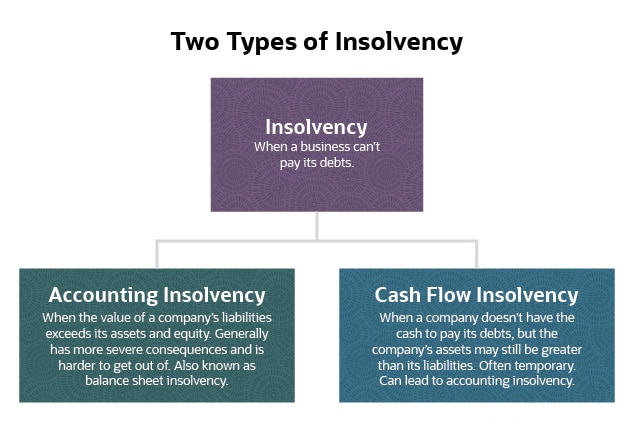The 20-Second Trick For Insolvency Practitioner
The 20-Second Trick For Insolvency Practitioner
Blog Article
The Basic Principles Of Insolvency Practitioner
Table of ContentsUnknown Facts About Insolvency PractitionerThe Only Guide for Insolvency PractitionerFacts About Insolvency Practitioner UncoveredLittle Known Facts About Insolvency Practitioner.The smart Trick of Insolvency Practitioner That Nobody is DiscussingInsolvency Practitioner Things To Know Before You Get ThisThe Of Insolvency Practitioner
Insurance policy is monitored and managed by state insurance departments, and one of their key objectives is protecting insurance holders from the danger of a business in economic distress. When a business enters a period of monetary trouble and is unable to satisfy its obligations, the insurance policy commissioner in the company's home state launches a processdictated by the legislations of the statewhereby initiatives are made to assist the firm reclaim its monetary ground.If it is determined that the company can not be restored, the company is proclaimed financially troubled, and the commissioner will certainly ask the state court to purchase the liquidation of the company. [Back] The insurance policy commissioner, either selected by the governor or elected, heads the state insurance policy department and monitors and manages insurance coverage task within the state.

By getting control of a firm, the commissioner (or the insurance coverage division) is, by regulation, the rehabilitator or liquidator of the company. In this capability, the commissioner or division takes control of the firm's operations. Rather than do so directly, the commissioner may maintain a special replacement receiver to monitor the business's activities.
The 7-Minute Rule for Insolvency Practitioner
The receiver looks after an audit of the business's assets and responsibilities and carries out the estate of the business. In doing so, the receiver seeks to make best use of the company's assets, move them to money, and afterwards disperse that cash money to creditors having legitimate claims against the insurance provider in accordance with settlement priorities defined by state law (in all states, insurance policy holders are concern plaintiffs whose insurance claims are paid prior to those of general financial institutions).
All insurance provider (with limited exemptions) certified to sell life or health and wellness insurance policy or annuities in a state should be members of that state's guaranty association. The warranty association accepts the commissioner and the receiver in pre-liquidation preparation. When the liquidation is ordered, the warranty organization offers coverage to the business's insurance holders that are state homeowners (up to the levels specified by state lawssee below; any type of advantage amounts above the warranty asociation benefit levels become claims against the business's continuing to be properties).
The above coverage degrees use independently for each insolvent insurance company. When an insurer fails and there is a deficiency of funds required to meet the commitments to insurance holders, state guaranty organizations are activated. Guaranty associations have subrogation legal rights to a proportionate share of the possessions staying in the fallen short insurance company.
Insolvency Practitioner for Beginners
Second, insurance firms doing service in that state are analyzed a share of the quantity required to fulfill the part of the guaranty organizations' covered cases not otherwise funded with estate possessions. The amount insurance providers are evaluated is based on the amount of costs that they gather in that state. The National Organization of Life and Wellness Insurance Policy Guaranty Organizations (NOLHGA) is made up of the life and wellness insurance coverage guaranty associations of all 50 states and the District of Columbia.
NOLHGA establishes a task force of depictive warranty associations to collaborate with the insurance policy commissioner to establish published here a strategy to secure policyholders. For more details on NOLHGA's function while doing so, see "What Is NOLHGA?" and "The Safeguard at the office." [Back]
You are below: Bankruptcy is when a business or individual can't pay debts when they are due. There are numerous choices offered to a financially troubled business or individual: ASIC regulates business, it does not handle individual insolvency treatments. To learn more regarding insolvency and personal insolvency contracts, check out the Australian Financial Safety Authority web site.
9 Easy Facts About Insolvency Practitioner Described
Anticipating security by helping you pick the right clients and the right markets to avoid uncollectable bill to begin with, many thanks to acute financial analysis (Insolvency Practitioner). Comprehensive market knowledge, giving you with 360-degree presence on company industries and approaching troubles. It would be a simplification to assume a trade credit history insurance starts and finishes with premiums and pay-outs
This can happen for a variety of factors, consisting of bad financial administration, unanticipated expenses, or a modification in the marketplace. If a business is bankrupt, it may be compelled to shut down or sell assets to pay creditors. This can have a significant influence on business, workers, and investors.
The Main Principles Of Insolvency Practitioner
It can bring about job losses, property sales, and even personal bankruptcy. It is very important to understand exactly how business insolvency works and how it can impact your company. Why does a business participate in bankruptcy? There are a variety of reasons that a company may participate in bankruptcy. The most typical factor is that the firm is not able to pay its debts as they drop due.

Insolvency Practitioner for Dummies
The business may be compelled to sell properties, lay off personnel or even close down. Financial institutions may be left out of pocket and the company's investors might see their financial investment go away.
This my review here can take place for a number of reasons, consisting of inadequate financial administration, unforeseen expenses, or a change in the market. If a firm is insolvent, it might be forced to close down or offer off possessions to pay financial institutions. This can have a major impact on the business, staff members, and investors.
The Buzz on Insolvency Practitioner
It can bring about task losses, asset sales, and even personal bankruptcy. It is very important to understand how company insolvency jobs and just how it can impact your service. Why does a company enter into bankruptcy? There are a number of reasons that a company may enter into insolvency. The most typical reason is that the firm is not able to pay its financial debts as they fall due.
Various other reasons for bankruptcy include fraud, mismanagement, and unanticipated costs. When a firm becomes find this bankrupt, its possessions are used to pay off its debts. This can have a significant effect on business, as it may no more have the ability to proceed running. Insolvency can also lead to task losses and the closure of services.
The business might be compelled to offer properties, lay off staff or also shut down. Creditors might be left out of pocket and the company's investors might see their investment vanish.
Report this page